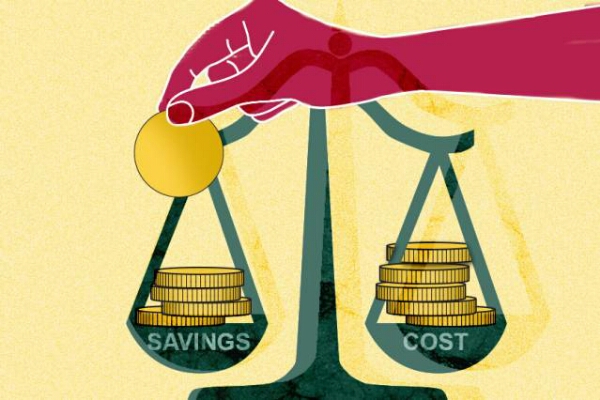Health care savings can greatly defray costs of reducing carbon emissions, experts at MIT report. But just how large are the health benefits of cleaner air in comparison to the costs of carbon reduction policies? Researchers looked at three U.S. policies achieving the same carbon reductions. They found that the savings on health care spending and other costs related to illness can be, in some cases, more than 10 times the cost of policy implementation.
“Carbon-reduction policies significantly improve air quality,” says Noelle Selin, an assistant professor of engineering systems and atmospheric chemistry at MIT, and co-author of a study published recently in Nature Climate Change. “In fact, policies aimed at cutting carbon emissions improve air quality by a similar amount as policies specifically targeting air pollution.”
Comparing Climate Policy Costs To Health Benefit Savings
Selin and her colleagues compared the health benefit savings to the economic costs of three climate policies. The three were designed to resemble proposed U.S. climate policies, including a clean-energy standard, a transportation policy, and a cap-and-trade program. The clean-energy standard was similar to proposals in the Environmental Protection Agency’s Clean Power Plan, requiring reductions in power plant emissions.
The researchers found that savings from avoiding medical care and saved sick days remained roughly constant. The costs of the policies varied greatly, however. For example, the savings from avoiding health problems could recoup 26% of the cost to implement a transportation policy. But the savings could recoup up to 10.5 times the cost of a cap and trade program. Policies aimed at specific sources of air pollution, like power plants and vehicles, did not lead to a substantial difference between costs and savings.
Health Savings Constant At $247 Billion
Figured in 2006 dollars, associated health benefits represent a savings of $247 billion. The price tag of a clean energy standard was similar, at $208 billion. On the expensive end of the spectrum, a transportation policy with rigid fuel-economy requirements was the most expensive policy, costing more than $1 trillion. On the low end, however, the estimated cost of implementing a cap and trade program was estimated at only $14 billion.
“If cost-benefit analyses of climate policies don’t include the significant health benefits from healthier air, they dramatically underestimate the benefits of these policies,” says lead author Tammy Thompson. Thompson, now at Colorado State University, conducted the research as a postdoc in Selin’s group.
Most Detailed Assessment To Date
Using comprehensive models of both the economy and the atmosphere, the study is the most detailed assessment to date. The MIT team researched the interwoven effects of climate policy on the economy, air pollution, and the cost of health problems related to air pollution. They were particularly interested in the effect of emissions policy changes on improvements in local and regional air quality.
Burning fossil fuels release many chemicals into the atmosphere, including carbon dioxide. Some of these substances interact to form ground-level ozone, as well as fine particulate matter (FPM). FPM is airborne particles small enough to be inhaled deep into the lungs and even absorbed into the bloodstream.
Ozone And FPM Can Cause Asthma, Heart And Lung Disease, And Early Death
Ground-level ozone and FPM are two of the biggest health offenders related to fossil fuel emissions. Both pollutants can cause asthma attacks and heart and lung disease, and can lead to premature death. The researchers modeled where and when these chemical reactions occurred, and where the resulting pollutants ended up.
The main component of smog is ozone. 231 counties in the U.S. exceeded the EPA’s regulatory standards for ozone in 2011. Standards for fine particulate matter were exceeded in 118 counties. Because these policies aim at cutting carbon emissions from sources like power plants and vehicles, they likewise lead to reductions in other harmful types of air pollution. Lower rates of asthma and other health problems are easily recognizable benefits of emissions reduction policies.
“These Carbon Policies Are Just The First Step”
The MIT team reports that cutting carbon dioxide from current levels in the U.S. will result in savings from better air quality. However, health benefits related to air pollution reduction will decline as future emissions policies become more stringent. Selin cautions that, after a certain point, most of the health benefits will have already been reaped. It must be understood that additional carbon emissions reductions won’t translate into more health improvements.
Selin states, “These carbon policies are just the first step.” She agrees that health benefits from reducing air pollution can help motivate immediate carbon policies. However, Selin says, “To manage climate change, we’ll have to make carbon cuts that go beyond the initial reductions that lead to the largest air pollution benefits.”
(Top Image Source: MIT)












